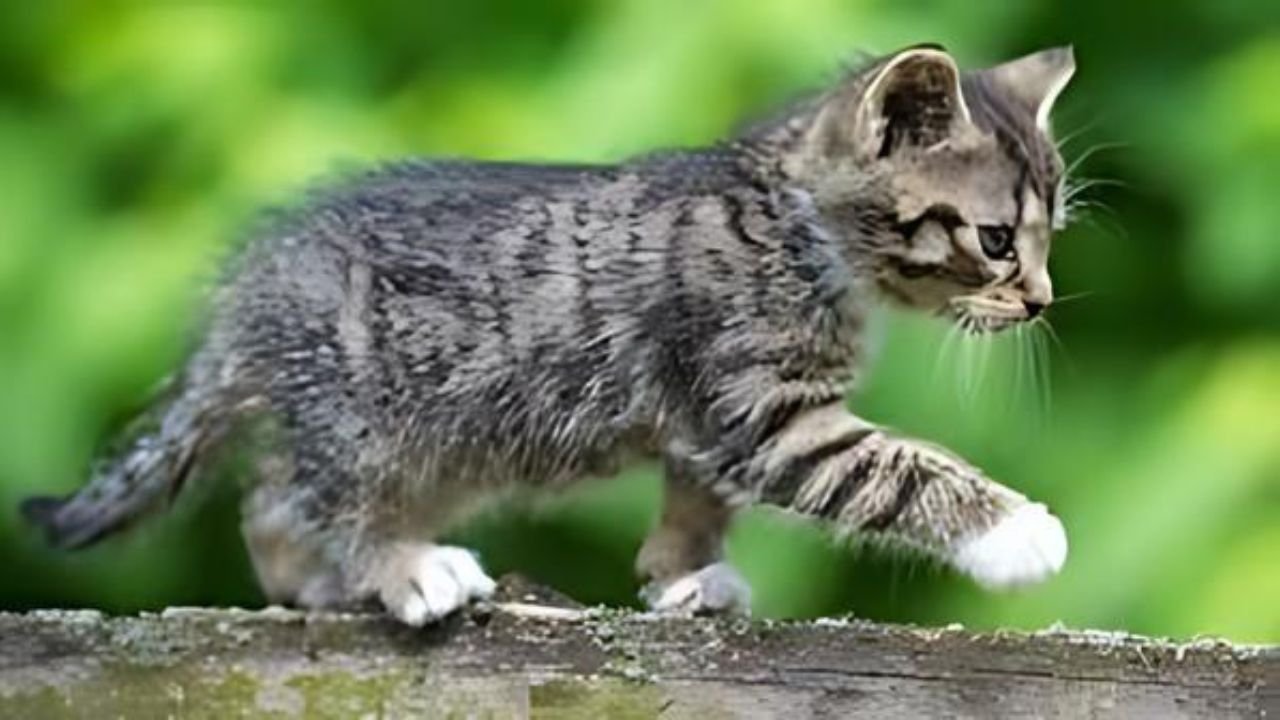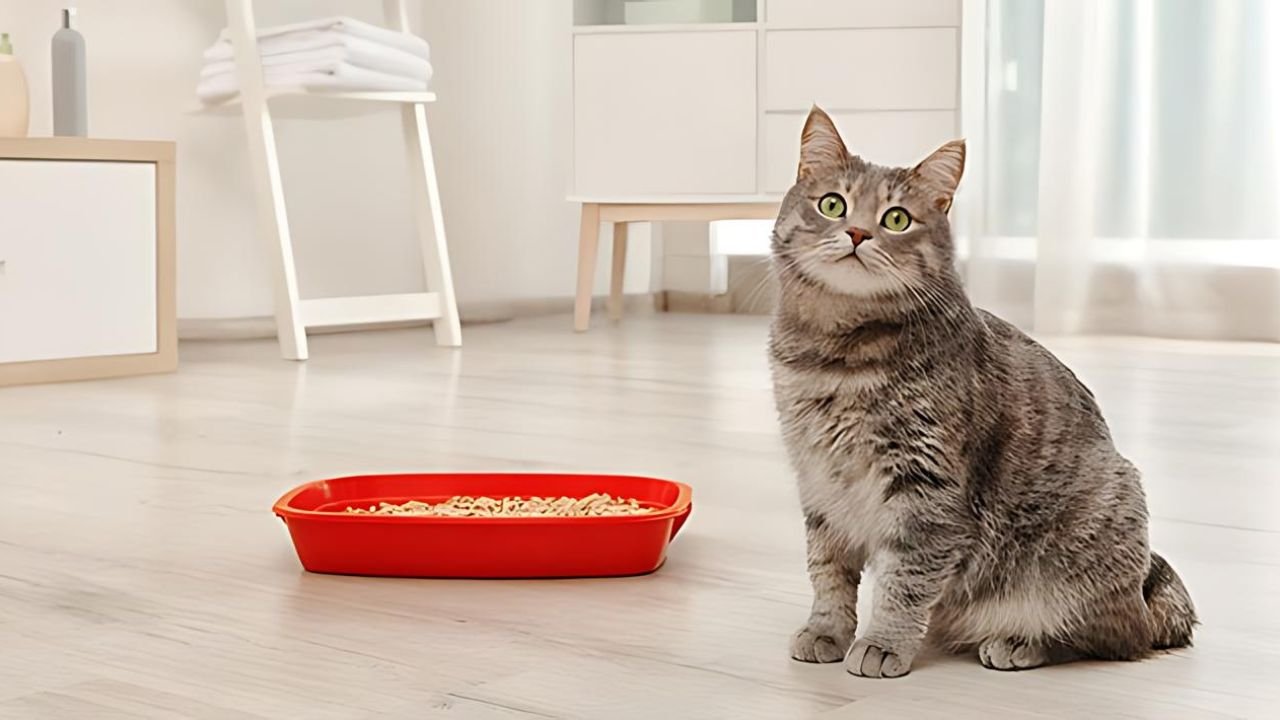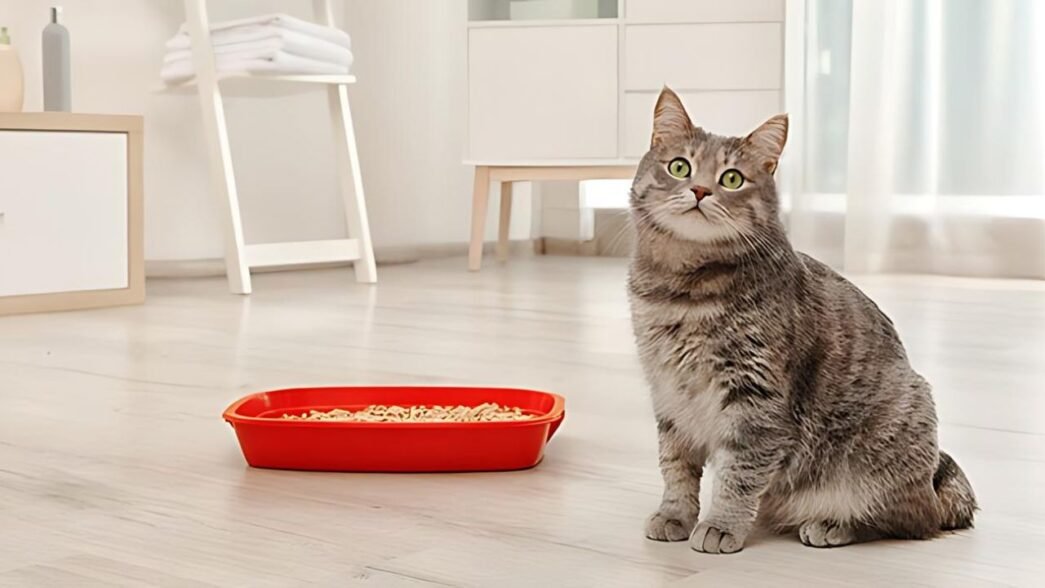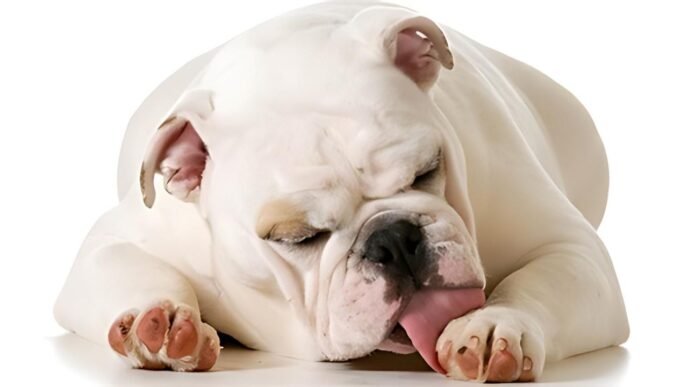Are you tired of finding mysterious puddles around your home and wondering, “Why is my cat peeing outside the litter box?” This common issue can be frustrating for cat owners. Understanding the reasons behind this behavior is crucial for your cat’s health and your home’s cleanliness.
- 01. Identifying the Problem
- 02. Common Medical Reasons for Inappropriate Urination in Cats
- 03. Behavioral Reasons for Litter Box Avoidance
- 04. Environmental Factors That Contribute to Litter Box Issues
- 05. Solutions and Preventative Measures
- 06. Frequently Asked Questions
- 07. Top 5 Amazon Products to Help Address Cat Peeing Outside the Litter Box
- 08. Conclusion - Why Is My Cat Peeing Outside the Litter Box
It’s essential to address this behavior promptly to rule out any underlying medical conditions such as urinary tract infections, kidney disease, or diabetes. Stress, anxiety, or changes in the household environment could also lead to your cat avoiding the litter box.
By identifying the root cause behind your cat’s inappropriate elimination, you can take steps to help your feline friend and restore harmony in your home. Let’s explore the common reasons why cats pee outside the litter box and how you can tackle this issue effectively.
01. Identifying the Problem
Do you find yourself puzzled by your cat’s behavior of peeing outside the litter box? Identifying the problem is the first step in addressing this issue effectively. Let’s delve into the possible reasons why your feline friend is exhibiting this behavior and how you can pinpoint the root cause.
A. Medical Conditions:
When your cat consistently avoids the litter box, it could be attributed to underlying medical conditions such as urinary tract infections, kidney disease, or diabetes. These conditions can cause discomfort and lead to inappropriate elimination behavior. Consulting your vet to rule out any medical issues is essential in investigating the problem.
B. Behavioral Issues:
Stress, anxiety, or changes in the household environment can also trigger your cat to pee outside the litter box. Cats are sensitive creatures, and alterations in their surroundings can impact their behavior. Understanding your cat’s emotional state and any recent changes can provide insights into their behavioral patterns.
C. Litter Box Preferences:
The type of litter box, its cleanliness, location, and size can influence your cat’s toileting habits. Cats have preferences when it comes to their bathroom space. Ensuring the litter box is suitable for your cat’s needs and preferences is key to preventing accidents outside the box.
D. Territorial Marking:
In some cases, cats may urinate outside the litter box as a form of territorial marking. This behavior is more common in unaltered cats but can also occur in spayed or neutered cats. Recognizing the difference between inappropriate elimination and marking behavior is crucial in addressing the issue effectively.
E. Environmental Triggers:
Changes in the household, introduction of new pets, loud noises, or disruptions in the routine can stress your cat and lead to inappropriate elimination. Understanding your cat’s environment and minimizing stressors can help in mitigating the problem.
For more detailed insights on why cats pee outside the litter box and how to address this issue, you can refer to reputable sources like PetMD’s article on reasons for cat peeing outside the litter box and The Spruce Pets’ guide on cat peeing outside the litter box.
Remember, identifying the problem is the first step towards finding a solution and restoring harmony in your home.
02. Common Medical Reasons for Inappropriate Urination in Cats
Have you ever wondered why your feline companion is displaying the perplexing behavior of peeing outside the litter box? Cats, as mysterious and unique creatures, may engage in inappropriate urination due to various underlying medical conditions. Understanding these medical reasons is crucial for addressing this issue effectively and ensuring your cat’s well-being.
A. Urinary Tract Infections (UTIs)
Urinary Tract Infections (UTIs) are a common culprit behind cats urinating outside the litter box. These infections can cause discomfort and urge your cat to avoid using their designated bathroom spot. UTIs require prompt veterinary attention to diagnose and treat appropriately.
B. Bladder Infections and Inflammation
Bladder infections and inflammation can also lead to inappropriate urination in cats. The irritation and pain associated with these conditions may prompt your cat to seek relief elsewhere. Identifying and addressing bladder issues is essential in managing this behavior.
C. Kidney Disease
Kidney disease is another significant medical reason for cats peeing outside the litter box. Issues with the kidneys can result in increased urination frequency or difficulty in controlling urination, leading to accidents. Regular monitoring and veterinary care are vital for cats with kidney disease.
D. Diabetes
Diabetes, whether Type 1 or Type 2, can impact a cat’s urinary habits and lead to inappropriate elimination. The increased thirst and urination associated with diabetes can contribute to accidents outside the litter box. Proper management of diabetes through medication and diet is crucial in controlling this behavior.
E. Idiopathic Cystitis
Idiopathic Cystitis, characterized by inflammation of the bladder with an unknown cause, can manifest as inappropriate urination in cats. The discomfort and urgency associated with this condition may result in your cat avoiding the litter box. Understanding and managing idiopathic cystitis is essential for improving your cat’s quality of life.
For more detailed information on medical issues that can cause cats to pee outside the litter box and how to address these concerns, you can explore resources like Inappropriate Elimination Disorders in Cats by VCA Hospitals and Feline Behavior Problems: House Soiling by Cornell Feline Health Center. Understanding the medical aspects of inappropriate urination is vital in providing the best care for your feline companion.
03. Behavioral Reasons for Litter Box Avoidance
Understanding why your cat is peeing outside the litter box is essential to address this common issue effectively. Cats may exhibit litter box avoidance due to various behavioral reasons that can be managed with the right approach. Let’s explore the factors contributing to this behavior to help you understand and resolve the issue for your feline companion.
A. Stress and Anxiety
Stress and anxiety are significant factors that can lead to litter box avoidance in cats. Common stressors such as changes in the household, the introduction of new pets, loud noises, or disruptions in the routine can trigger your cat’s anxiety, causing them to urinate outside the litter box. By recognizing these stressors and creating a calm environment, you can help reduce your cat’s anxiety and promote proper litter box use.
B. Territorial Marking
Territorial marking is a natural behavior in cats that involves urine spraying as a way to mark their territory. It’s essential to distinguish between territorial marking and regular urination outside the litter box. Unaltered cats are more likely to engage in territorial marking, but spayed or neutered cats can also exhibit this behavior. Providing environmental enrichment and addressing any underlying conflicts can help minimize territorial marking incidents.
C. Litter Box Preferences
Cats have specific preferences when it comes to their litter box. The type of litter, cleanliness, location, and size of the litter box can influence your cat’s toileting habits. Ensuring that the litter box meets your cat’s preferences is crucial in preventing accidents outside the box. Experimenting with different types of litter and maintaining a clean litter box can encourage your cat to use it consistently.
For more insights on resolving litter box problems and understanding your cat’s behavior, you can refer to resources like ASPCA’s article on Litter Box Problems and The Best Friends Resource on Cat Not Using Litter Box: Causes and Solutions. Remember, addressing behavioral reasons for litter box avoidance can help create a comfortable environment for your cat and prevent future issues.
04. Environmental Factors That Contribute to Litter Box Issues
Cats can be finicky creatures when it comes to their litter box habits. Understanding the environmental factors that contribute to litter box issues is essential for addressing and resolving this common problem effectively. Let’s explore key elements that play a role in your cat’s litter box behavior.
A. Litter Box Cleanliness
Maintaining a clean litter box is not just about aesthetics; it significantly impacts your cat’s willingness to use it. Cats are naturally clean animals and may avoid a dirty litter box. Regularly scooping out waste, changing the litter, and keeping the box clean and odor-free can encourage your cat to use it consistently. Learn more about the importance of cleanliness in solving litter box problems.
B. Type of Litter Used
The type of litter you choose can influence your cat’s litter box preferences. Cats may have preferences for certain textures or scents. Experiment with different litter types such as clumping, non-clumping, scented, or unscented to see what your cat prefers. Finding the right litter can make a significant difference in encouraging litter box use. Discover more about litter types and cats’ preferences here.
C. Litter Box Location
The location of the litter box plays a crucial role in your cat’s comfort and convenience. Ensure the litter box is placed in a quiet, easily accessible area where your cat feels safe and undisturbed. Avoid placing it near loud appliances, high-traffic areas, or areas with poor ventilation. A suitable location can help prevent litter box aversion. Check out tips on litter box issues causes and solutions for more insights.
D. Improving Litter Box Appeal
Making the litter box appealing to your cat is key to encouraging proper use. Consider factors like the size of the box, the depth of litter, and the presence of a hood or liner based on your cat’s preferences. Providing multiple litter boxes in different areas of the house can also reduce competition and stress. Enhancing the appeal of the litter box can make it a more inviting and preferred spot for your cat. Learn more about improving litter box appeal here.
By addressing environmental factors such as cleanliness, litter type, location, and appeal of the litter box, you can create a cat-friendly toileting environment and minimize litter box issues effectively.
05. Solutions and Preventative Measures
Finding your cat peeing outside the litter box can be frustrating, but there are effective solutions and preventative measures to address this issue and restore harmony in your home. By taking proactive steps and understanding your cat’s behavior, you can tackle this problem successfully.
A. Consulting with a Veterinarian
Seeking veterinary advice is crucial to rule out any underlying medical issues that may be causing your cat to urinate outside the litter box. Conditions like urinary tract infections, kidney disease, or diabetes can lead to inappropriate elimination behavior. Consulting with a vet ensures proper diagnosis and treatment, addressing potential health concerns effectively. For more in-depth insights on medical aspects related to cats peeing outside the litter box, you can refer to resources like Urinating Outside the Litter Box: What to do when it’s behavioral.
B. Behavioral Modifications
Implementing behavioral modifications can help reduce stress and address behavioral issues that may contribute to litter box avoidance. Strategies such as creating a calm environment, providing enrichment activities, and maintaining a consistent routine can alleviate anxiety and promote proper litter box usage. Understanding your cat’s emotional state and responding with appropriate behavioral interventions can improve their toileting habits. For additional tips on behavioral modifications, you can explore insights from reputable sources like 5 Tips to Stop Your Cat from Peeing Outside the Litterbox.
C. Improving Litter Box Conditions
Maintaining an ideal litter box environment is essential to encourage your cat to use it consistently. Practical tips such as regular cleaning, using the right type of litter, ensuring proper positioning of the litter box, and providing multiple boxes for multi-cat households can make a significant difference. Addressing your cat’s preferences and creating a comfortable bathroom space can prevent accidents outside the box. Learn more about enhancing the litter box environment from resources like Why Your Cat Pees Outside the Litter Box and 4 Ways to.
D. Reducing Cat Stress
Reducing stress levels in your cat can play a key role in preventing litter box issues. Environmental triggers like changes in the household, introduction of new pets, or loud noises can stress your cat and lead to inappropriate elimination. By minimizing stressors, providing a safe and secure environment, and offering calming solutions like pheromone sprays, you can promote your cat’s well-being and encourage proper litter box use. Discover more strategies for reducing cat stress from trustworthy sources like Top 10 Ways to Stop Your Cat from Peeing Outside.
Remember, addressing the root causes behind your cat’s behavior and taking proactive steps can help resolve litter box issues effectively, ensuring a happy and healthy environment for both you and your feline companion.
06. Frequently Asked Questions
Have you ever found yourself wondering why your cat chooses to pee outside the litter box? Understanding the reasons behind this behavior is essential for cat owners facing this common issue. Let’s explore some frequently asked questions that can shed light on this puzzling behavior:
1. What are the Common Medical Reasons for Cats Peeing Outside the Litter Box?
When a cat consistently avoids the litter box, it might be due to underlying medical conditions like urinary tract infections, kidney disease, or diabetes. These health issues can lead to discomfort and inappropriate elimination behavior. Consulting a veterinarian to rule out medical concerns is crucial in addressing this problem effectively.
2. How Do Behavioral Factors Influence Litter Box Avoidance in Cats?
Stress, anxiety, or changes in the household environment can trigger cats to pee outside the litter box. Understanding your cat’s emotional state and any recent alterations in their surroundings can provide insights into their behavior and help mitigate litter box avoidance.
3. What Role Do Litter Box Preferences Play in Cat Toileting Habits?
The type of litter box, its cleanliness, location, and size can affect your cat’s bathroom preferences. Cats have specific likes and dislikes when it comes to their toileting area. Ensuring the litter box suits your cat’s needs is crucial in preventing accidents outside the box.
4. Why Do Cats Engage in Territorial Marking Behavior?
Territorial marking is a common reason for cats to urinate outside the litter box. This behavior is more prevalent in unaltered cats but can also occur in spayed or neutered ones. Differentiating between inappropriate elimination and territorial marking is essential in addressing the issue effectively.
5. How Can Environmental Triggers Impact a Cat’s Litter Box Behavior?
Changes in the household, the introduction of new pets, loud noises, or disruptions in routine can stress cats and lead to inappropriate elimination. Understanding your cat’s environment and minimizing stressors can help alleviate this issue effectively.
For more detailed insights and answers to common questions related to cats peeing outside the litter box, you can refer to reputable sources like PetMD’s article on reasons for cat peeing outside the litter box and The Spruce Pets’ guide on cat peeing outside the litter box. Understanding the various factors contributing to this behavior is the first step towards finding solutions and restoring harmony in your home.
Read More: Why Does My Cat Throw Up After Eating? Learn 7 Common Causes

07. Top 5 Amazon Products to Help Address Cat Peeing Outside the Litter Box
Here are five highly recommended products on Amazon that can assist in addressing the issue of your cat peeing outside the litter box:
- PetSafe ScoopFree Ultra Self-Cleaning Litter Box : A self-cleaning litter box that automatically removes waste, minimizing odor and ensuring a clean environment for your cat.
- Fresh Step Advanced Clumping Cat Litter with Febreze: This clumping cat litter features activated charcoal that effectively traps and eliminates odors, making it a great choice for maintaining a clean litter box.
- Nature’s Miracle Advanced Stain and Odor Eliminator : An enzyme cleaner that removes pet stains and odors, ensuring your home remains fresh and clean despite any accidents outside the litter box.
- Comfort Zone Multi-Cat Diffuser Starter Kit : A pheromone diffuser that helps reduce stress and anxiety in multi-cat households, promoting a calm environment that can prevent litter box avoidance.
- PetFusion BetterBox Non-Stick Large Litter Box : A non-stick, high-sided litter box that is easy to clean and provides plenty of space for your cat, making it an ideal choice to encourage proper litter box usage.
Integrating these products into your home can significantly improve your cat’s litter box habits and enhance your living environment.
08. Conclusion – Why Is My Cat Peeing Outside the Litter Box
Addressing the mystery of why your cat is peeing outside the litter box is crucial for both your feline companion’s well-being and your home’s cleanliness. From potential medical conditions like urinary tract infections to behavioral triggers like stress and anxiety, understanding the root cause is the first step in finding a solution.
Take the initiative to identify and tackle the reasons behind your cat’s inappropriate elimination behavior promptly. Whether it’s providing a suitable litter box environment, managing stress factors, or seeking veterinary advice, proactive measures can resolve this common issue effectively.
Remember, a happy cat and a harmonious home start with unraveling the reasons behind your cat’s litter box behavior. Stay informed, take action, and enjoy a peaceful coexistence with your beloved feline friend.













